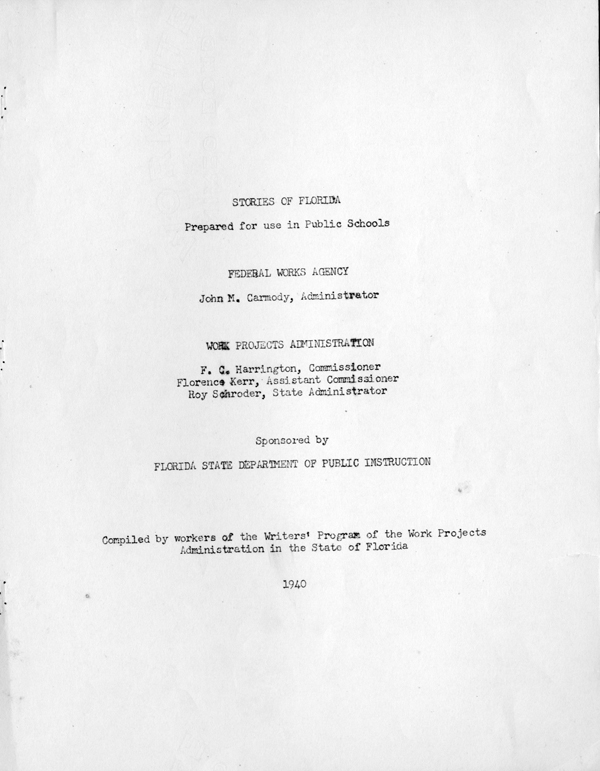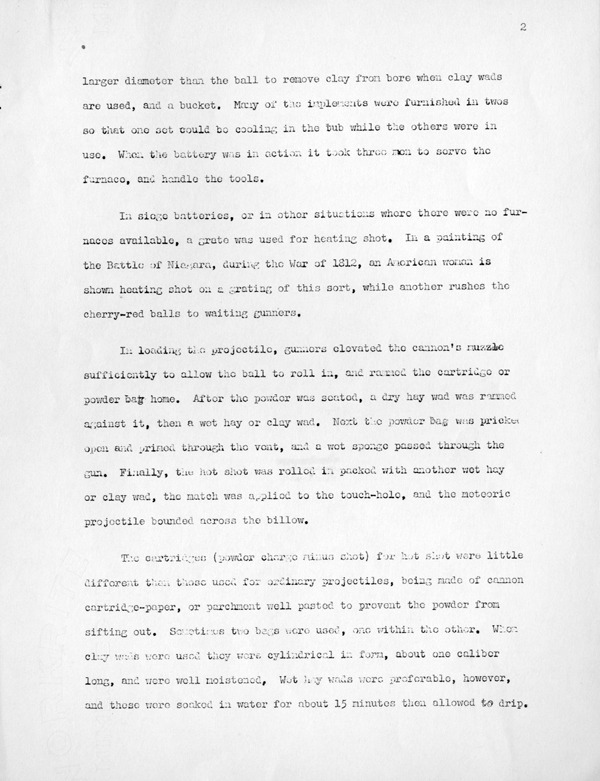Florida Memory is administered by the Florida Department of State, Division of Library and Information Services, Bureau of Archives and Records Management. The digitized records on Florida Memory come from the collections of the State Archives of Florida and the special collections of the State Library of Florida.

State Archives of Florida
- ArchivesFlorida.com
- State Archives Online Catalog
- ArchivesFlorida.com
- ArchivesFlorida.com
State Library of Florida
Related Sites

Description of previous item
Description of next item

Title
Published Date
[page 3]
When the wet hay was used, steam was often seen to issue from the touch-
hole or vent as soon as the ball was rammed home, but as this was the effect of
the heat of the ball against the water contained in the wad no danger resulted
from it. It is said that the ball could cool in the gun without the charge taking fire,
but shots were usually fired as quickly as possible to prevent the steam dampening
and injuring the powder.
It has been argued by some that the cannon ball would cool in its passage
through the air towards its objective, but the contrary is true; the temperature of
the ball was increased by friction with the air. According to the Ordnance Manual
of 1861, a red-hot shot retained sufficient heat to set fire to wood after having
struck the water several times!
The penetrations of cold and hot shot into wood were equal under the
same circumstances. Charges for hot shot were reduced, however, to one quarter
or one-sixth the weight of the shot in order that the ball might remain in the wood
and not penetrate too deeply as it was found that the fire was communicated more
rapidly and certainly to the wood when the ball did not penetrate more than 10 or
12 inches. At a greater depth the shot would be less effective, as the
communication with the external air was not sufficient for combustion.
With the invention of the ironclad Merrimac and Monitor during the later
days of the War between the States the days of wooden battleships were over,
and the hot shot furnace became obsolete also. During its heyday, however, the
arrival of some of the furnace's cookery rolling along pitch-oozing decks littered
with fragments of power bags,
Title
Subject
Description
Source
Date
Contributor
Format
Language
Type
Identifier
Published Date
Image URL
Thumbnail
Transcript Path
Image Path
Image Path - Large
Chicago Manual of Style
Hot Shot Oven at Fort Marion. 1940. State Archives of Florida, Florida Memory. <https://www.floridamemory.com/items/show/181525>, accessed 14 December 2025.
MLA
Hot Shot Oven at Fort Marion. 1940. State Archives of Florida, Florida Memory. Accessed 14 Dec. 2025.<https://www.floridamemory.com/items/show/181525>
AP Style Photo Citation

 Listen: The Gospel Program
Listen: The Gospel Program



